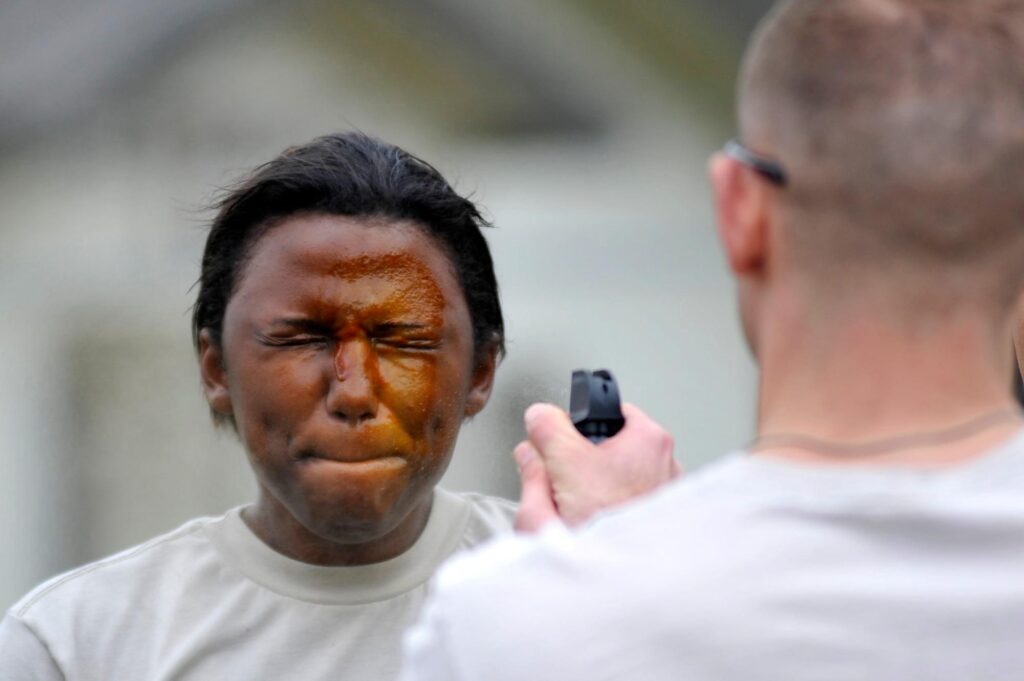Table of Contents
- Temporary Sensory Effects of Pepper Spray on Attackers
- How Pepper Spray Disrupts Respiratory and Visual Functions
- Duration and Recovery Time from Pepper Spray Exposure
- Best Practices for Using Pepper Spray Safely and Effectively
- To Conclude
Temporary Sensory Effects of Pepper Spray on Attackers
When pepper spray makes contact with an attacker’s skin or eyes, it triggers an immediate and intense reaction caused by its active ingredient, capsaicin. This compound binds to sensory pain receptors, resulting in a sudden burning sensation that can overwhelm the attacker’s nervous system. The discomfort typically manifests as severe eye irritation, temporary blindness, coughing, and difficulty breathing. These effects create a crucial window for self-defense, allowing the targeted individual to escape or call for help safely. Importantly, these symptoms are temporary but can feel excruciating, incapacitating even the most determined aggressors.
The sensory disruption includes:
- Intense eye burning and watering leading to difficulty opening or focusing the eyes.
- Inflammation of mucous membranes in the nose and throat, causing sneezing and choking sensations.
- Impaired respiratory function with coughing and shortness of breath.
- Skin burning and redness on exposed areas, heightening discomfort.
These rapid physiological responses effectively disrupt an attacker’s ability to coordinate movements or launch further aggression, making pepper spray a vital non-lethal self-defense tool.
How Pepper Spray Disrupts Respiratory and Visual Functions
Pepper spray contains capsaicin, a potent irritant derived from chili peppers, which targets sensory nerve endings upon contact. When sprayed, it triggers an intense burning sensation in the eyes and mucous membranes, leading to immediate and involuntary closure of the eyelids. This reaction impairs vision drastically, reducing an attacker’s ability to navigate or focus. Additionally, capsaicin stimulates nerve receptors in the respiratory tract, causing inflammation and swelling that provoke coughing, choking, and difficulty breathing.
The combined effects create a multi-sensory disruption that overwhelms the attacker’s nervous system. Some of the key reactions include:
- Severe eye irritation: burning, tearing, and temporary blindness
- Respiratory distress: coughing fits, shortness of breath, and throat irritation
- Disorientation: dizziness and impaired motor function due to sensory overload
This combination incapacitates the individual long enough for a potential victim to escape or call for help, emphasizing pepper spray’s role as a critical non-lethal self-defense tool.
Duration and Recovery Time from Pepper Spray Exposure
Pepper spray typically causes intense but temporary effects, which vary depending on the concentration of the spray, the proximity of exposure, and individual sensitivity. Most people start to experience relief within 15 to 45 minutes, although some symptoms like redness and sensitivity to light may linger for a few hours. Immediate decontamination, such as rinsing the eyes with clean water or saline solution, can significantly reduce the duration of discomfort and accelerate recovery.
During recovery, it is important to avoid rubbing the affected areas, as this can exacerbate irritation. While the initial symptoms can be overwhelming, the body naturally neutralizes the capsaicin (the active ingredient in pepper spray) over time. Key points to consider include:
- Maintaining calm and steady breathing to help manage coughing and spasms
- Avoiding contact lenses and using soothing eye drops if needed
- Seeking medical attention if symptoms persist beyond a few hours or worsen unexpectedly
Best Practices for Using Pepper Spray Safely and Effectively
Handling pepper spray responsibly requires a clear understanding of its power and limitations. Always keep your spray easily accessible, such as clipped to a keychain or in a pocket, to ensure rapid deployment during an emergency. Before using it, confirm that you are within the optimal range (typically 6 to 10 feet) to maximize impact while maintaining safety. Avoid discharging pepper spray indoors or in confined spaces, as the aerosol can linger and affect bystanders, including yourself. Additionally, familiarize yourself with local laws regarding possession and use to stay compliant and avoid legal repercussions.
To maximize effectiveness and maintain safety, consider the following:
- Aim for the eyes and nose of the attacker to trigger an intense burning sensation and temporary blindness.
- Use short, controlled bursts rather than continuous sprays to conserve the product and reduce self-exposure risk.
- Practice regularly with an inert trainer spray or dummy canister to build confidence and muscle memory.
- After use, move away swiftly and seek a secure location while allowing the spray to take full effect.
To Conclude
In conclusion, understanding the temporary impact of pepper spray on attackers is crucial for both personal safety and informed decision-making. While pepper spray can effectively incapacitate an assailant by causing intense discomfort and disorientation, its effects are designed to be short-lived, allowing users the valuable opportunity to escape danger. However, it is important to remember that pepper spray should be used responsibly and as part of a broader approach to self-defense. Staying informed about how it works and its limitations ensures you can rely on it confidently if the need arises. Stay safe and stay prepared!Check Our Other Blogs
- StunGun – Your Trusted Source for Stun Guns, Laws, and Self-Defense Tips
- PepperSprayLaws – Your Trusted Resource for Pepper Spray Information
- StunGunLaws – Your Trusted Guide to Stun Gun Legality and Safety




